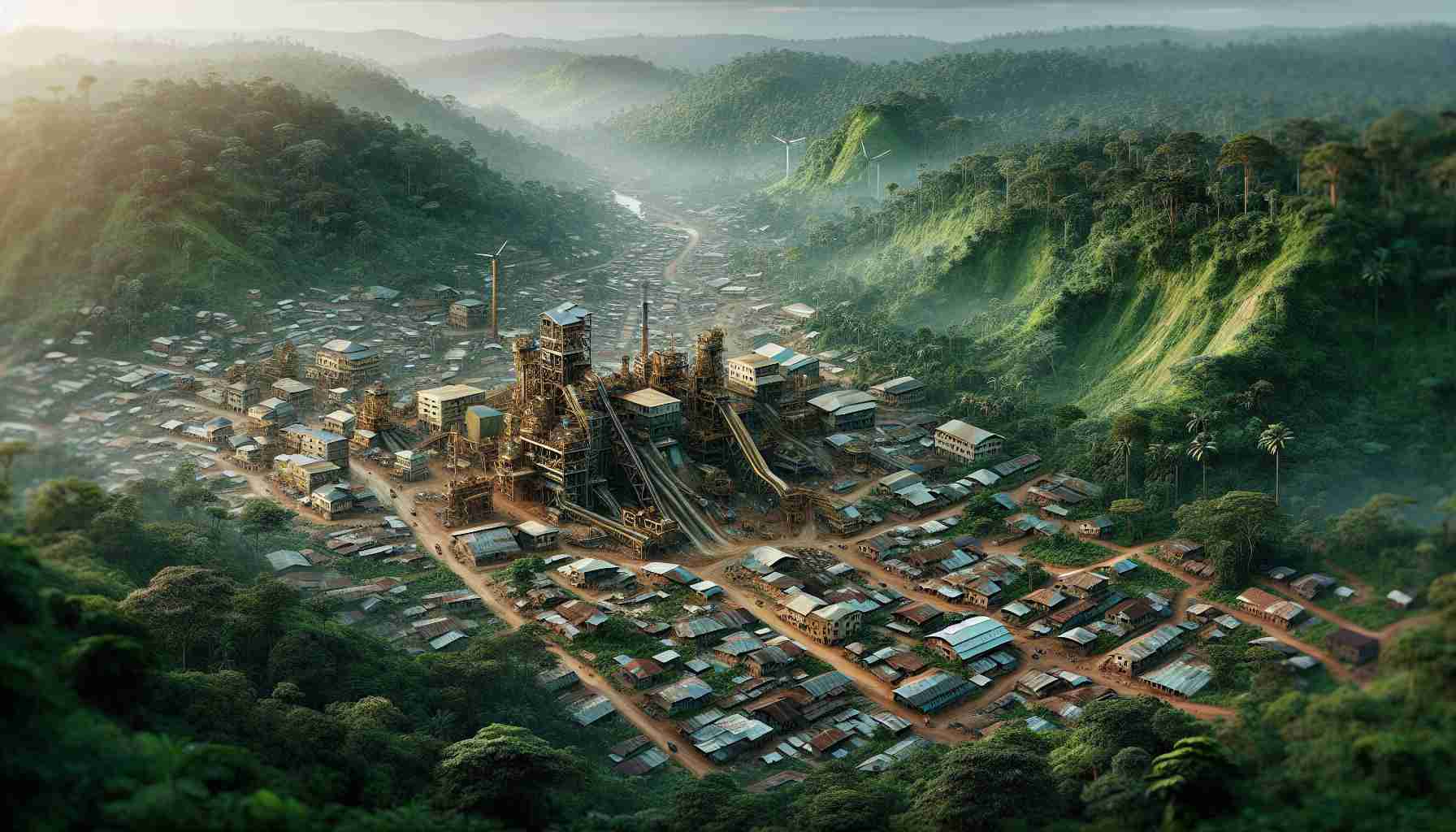A mining town in eastern Congo, known for its valuable mineral deposits essential for electronics, has recently been overtaken by the M23 rebel group, which is reported to have connections with Rwanda. Rubaya, recognized for its rich tantalum reserves—a metal critical in smartphone manufacturing—has reportedly been “liberated” by the insurgents, as per their announcement.
The Congolese military has abstained from giving their input regarding the town’s capture. Eastern Congo has been embroiled in a long-standing conflict that perpetuates one of the greatest humanitarian crises globally. Over 100 armed factions are vying for dominance in this region, abundant in minerals and fraught with violence that has driven roughly 7 million people from their homes.
Rubaya, specifically, has become a focal point due to its coltan mines, from which tantalum is extracted. The attention to “blood minerals” in high-tech industries was highlighted when the Congolese government sent an inquiry to Apple concerning the potential smuggling of such minerals in their supply chains.
In recent months, there has been a noticeable surge in hostilities between the M23 and the Congolese forces. This occurs as the planned departure of UN peacekeeping forces from the area looms near. Civilians have voiced concern, indicating that key routes into Goma, the region’s principal city and the capital of North Kivu province, are now cut off by the rebellion.
While the Congolese President accuses Rwanda of supporting the M23, a charge corroborated by international entities, Rwanda denies any involvement. Coinciding with these developments, France’s President has urged Rwanda to cease backing the rebel faction. The seizure of Rubaya marks a crucial point in the continuing strife, potentially empowering the M23 to exploit the town’s mineral wealth. The M23, primarily composed of ethnic Tutsis, has been a dissenting force since their separation from the national army and poses an increased threat to the stability of the region.
Key Questions and Answers:
1. What critical minerals are found in Rubaya, and why are they important?
Rubaya is particularly known for its coltan mines. Coltan is an ore that contains tantalum, which is essential for the manufacturing of electronic components used in smartphones, laptops, and other high-tech devices. Tantalum capacitors are valued for their reliability and ability to hold a charge.
2. What is the significance of the capture of Rubaya by the M23?
The capture of Rubaya by the M23 has significant implications both locally and internationally. Locally, the control of Rubaya gives the M23 access to substantial mineral wealth, which can provide funding for their military operations and strengthen their hold on the region. Internationally, it raises concerns about the supply of “conflict minerals” to the global market, which can perpetuate the cycle of violence.
3. What are the challenges associated with “blood minerals”?
The term “blood minerals” refers to minerals that are mined in conflict zones and sold to finance armed groups. The challenge lies in ensuring that the supply chains of corporations are not tainted by these minerals, which can contribute to human rights abuses and armed conflict. Additionally, “blood minerals” pose ethical dilemmas for consumers and companies who seek to promote responsible sourcing.
Challenges:
– Controlling the proliferation of “blood minerals” into the global supply chain remains a significant challenge.
– Humanitarian concerns in eastern Congo are exacerbated by the ongoing conflict.
– The credibility and sustainability of international initiatives like the Dodd-Frank Act, which aims to prevent the trade of conflict minerals, face scrutiny and implementation issues.
– Ensuring the safety of civilians and human rights in the area, given the power dynamics between rebel groups and state forces.
Controversies:
– The involvement of neighboring countries, particularly Rwanda, in supporting rebel groups is a source of regional tension.
– The effectiveness of international peacekeeping efforts and the potential impacts of their withdrawal from Congo are debated.
Advantages:
– The mineral wealth of eastern Congo has the potential to significantly contribute to the economic development of the country if properly managed.
– International attention on conflict minerals has led to increased corporate responsibility and consumer awareness.
Disadvantages:
– The illicit trade of minerals funds rebel groups and perpetuates violence.
– Mining operations can lead to environmental degradation and negatively impact local communities.
– The conflict can disrupt supply chains and increase the cost of raw materials globally.
For further information on the broader topic, you can visit the official websites of institutions engaged in the conflict resolution and monitoring of mineral trade in the Congo, such as the United Nations (UN) at United Nations, or the Extractive Industries Transparency Initiative (EITI) at EITI. These links are provided to ensure accurate and reliable information from validated sources.
